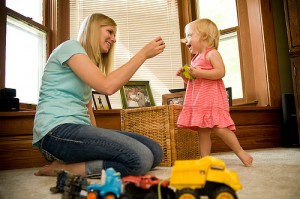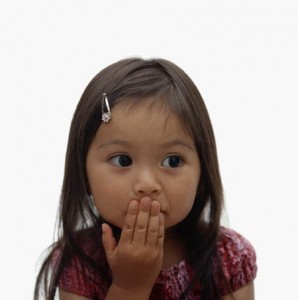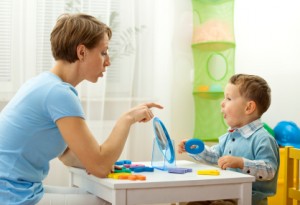How to Teach the “P” Sound
Your child’s speech-language pathologist (SLP) should provide you with activities to do at home to encourage your child’s progress. If not, ask the SLP for “homework.” If your child needs help with individual sounds, work on helping him master those sounds before moving on to syllables and whole words.
The “P” Sound
Some children struggle with the “p” sound, which is a bilabial sound. Bilabial sounds are made by the lips pressing together. “M” and “b” are also bilabial sounds. Try saying “popcorn” and “milk.” Notice how your lips press together initially to form the sound.
Visual Demonstration
Sit down with your child when he is well-rested, preferably after a nap so that his attention isn’t likely to wander for a while. Close your lips firmly and point to them, making sure that he sees them. While your child is looking at your mouth, make the “p” sound. Try to avoid saying whole syllables for the time being. Instead, focus on forcing the air out of your mouth while opening your lips. If your child’s attention wanders, laugh at yourself after making the sound. Turn it into a game to get him engaged in the learning process.
Tactile Demonstration
While continuing to make the “p” sound, hold your child’s hand in front of your mouth so that he can feel the air being forced out. Encourage him to place his hand in front of his own mouth while he makes the “p” sound. If your child appears to struggle with this, have him position his hand so that it touches your lips while you make the “p” sound. This allows him to feel your lips opening with the subsequent release of air.
Verbalizing Syllables
When your child can successfully make the individual “p” sound, begin repeating syllables. Say “pop!” loudly and then laugh at yourself to turn it into a game. Encourage your child to repeat the sound. You can also clap your hands and say “pop!” Use your child’s favorite toys to elicit more syllables with the “p” sound. For example, hold a Winnie the Pooh stuffed animal and show it to him while saying “poo!”
Teachable Moments
Turn everyday activities into teachable moments. Create a silly song about pizza pies while making dinner with your child. Encourage him to sing along so that he repeats the “p” sounds numerous times. Check out picture books from the library and create your own stories to go along with the images. Use as many “p” words as you can. For example, say “Prentice pranced to the park to play with Prudence.” Encourage your child to repeat the story with you. Bring your child to the playground or the pool and encourage him to repeat the words “playground” and “pool.”





